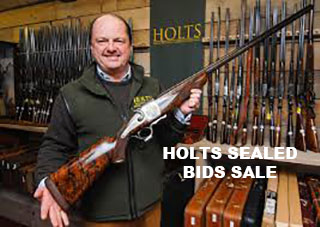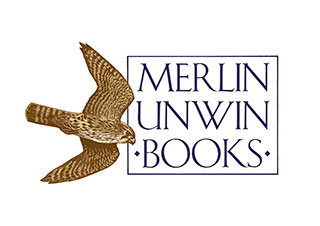Readers may be bored of the topic already, I’m sure it is covered elsewhere, ad nauseam, but I’ll risk it.
The widespread call for a reduction to zero usage of lead shot for shooting game, within five years, will have an impact on the market for British guns with 2 1/2” chambers. We just don’t know how much of an impact.
What enthusiasts for British vintage guns do know is this:
There are currently no options in the UK for shooting steel in 21/2” chambers.
Despite the assurances of the GTA and the proof authorities, many owners do not know, if they fire ‘standard steel’ through old guns that have been re-proofed for 70mm standard nitro proof, with any degree of choke, what effect that will have - especially in the case of guns with thin barrel walls. Many will not want to take the risk.
There is a ready-made alternative to lead shot that can be used in 2 1/2” chambered guns - bismuth. It costs £1 per-shot, rather than the 30p per-shot of quality lead cartridges.
There are products that could make the situation less severe. Tungsten matrix is a lead-like alternative that could be used in 2 1/2” cases at appropriate pressures. Currently available only in 70mm cases, it costs £2 per-shot. Other products, like ‘Nice Shot’ and ’T-Shot’ may become more viable if demand increases sufficiently.
Many people are confused and worried.
From an auctioneer’s point of view, this could be a temporary bonus. Auctioneers, as one commented to me recently, can ‘make money in a falling market’, as they get paid a percentage even when the amount of the sale is smaller - and in a scenario of mass dumping of 2 1/2” chambered British guns, volume makes up for individual prices. This kind of frenzy, however, could signal a ‘dead cat bounce’ for the sector, or a fire flaring before it expires for good.
Once these guns have been sold on en-masse, cheap, to overseas (mostly American) buyers, they won’t come back. That does not amount to good news for British auctioneers, who predominantly sell guns sourced from the UK. We may see the likes of Rock Island (represented by Howard Dixon Associates) or Springer, in Vienna, move in to sell these guns abroad, to countries where lead shot is not restricted.
Reaction from enthusiasts has been mixed. One New Zealander told me, ‘This could be good news for me; the guns I like buying could suddenly get cheaper’ . Others have been more worried. I took several ‘phone calls from people unsure about the future viability of their use of vintage British guns and confused about the nature of the ‘ban’, which, of course, isn’t a ban at all. It is an announced strategy fo engineering a voluntary phase-out of lead for hunting, which, it is calculated, I’m sure, will avoid the need for a formal ban to be legislated.
Unfortunately, the issue has become a polarising one, with people ‘taking sides’ and trash-talking anyone who does not subscribe to their particular, ‘no compromise’ stance. This is not helpful. What we need is clear-headed thinking, a will to make a non-lead future viable and a strategy to minimise its negative effects on our activities.
Shooting has always coped with change, indeed, the British gun industry thrived on change. Advances in the Victorian era saw multitudes of firearms fall out of fashion as a new improvement made them redundant. Flintlocks were hung over the mantelpiece, then percussion guns, then pin-fires, as shooters adapted to the new inventions.
Those shouting the loudest are ‘high bird’ shooters who fear their sport will be ruined if they have to shoot steel. Well, shooters once had to cope with black-powder and over-shot cards, which limited performance but they still went shooting and enjoyed great sport.
Those who decry the ‘wounding risk’ from steel shot are often those who shoot birds with a one-in-ten kill ratio.
We organise our sport around the prevailing conditions, including the range and effectiveness of the guns and ammunition we use. Those who decry the ‘wounding risk’ from steel shot are often those who shoot birds with a one-in-ten kill ratio. How many birds are these, apparently ‘humane shooting’ advocates now, wounding at those ranges one wonders?
Sometimes, we have to look at our defences and hear how they sound in the ‘normal world, outside of shooting. If the European Chemicals Agency is considering lead to be a toxic substance, a risk to wildlife and (perhaps) a risk to humans eating game, and your primary objection is ‘I want to shoot seventy yard pheasants and I don’t want to pay for premium non-toxic ammunition’, you won’t look seriously interested in conservation to the layman, In my opinion.
I make these observations with a heavy heart, my reading of the evidence suggests that lead shot used by most shooters in farmland and forestry poses very little, if any, risk to wildlife. Lead is, by far the best projectile for shotguns, especially the ones I use and deal in. This move is not good for me personally, or in business terms. But I’m not taking it personally, I’m working out how to deal with it.
The sad fact is that self-regulation has been a joke. 70% of ducks tested in England were shot with lead. I remember twenty years ago old cheapskates laughing that they were using ‘leadmuth’ when ducks were on the wing. I told them at the time that if we did that, we were guaranteeing a total lead ban in the future. Well, what you sow, you will eventually reap.
Some of the anger from the Trade has been over the perceived lack of consultation. There are two ways of looking at this - either organisations mirror the current thinking of their members or they spend time, money and effort trying to learn a lot about an issue and they try to provide leadership. Readers will all have their own opinions about this but it is clear that many people are unhappy about the nature of the public announcement. Of course, it gained us no credit with the anti-shooting brigade - LACS announcing ‘shooters finally admit they have been telling lies about lead for years’.
One or two other issues occurred to me in the advice coming from the authorities. The GTA announced advice from the proof house about the use of ‘standard steel’ in standard nitro-proofed guns. Proof has always been about just that - testing a unto prove it can withstand a particular load. None of these guns have been tested in the proof house with steel proof loads, so we go from ‘proof’ to ‘assertion’ (some might say ‘assumption’) very quickly. This may be expedient but it undoes two centuries of precedent.
It is clear we are entering a challenging, divisive and difficult phase for shooting sports and businesses. Adapt we must. Where we are in five years will depend on how we do adapt. With regard to vintage English guns, which are used by a small minority of the current 600,000 shooters in the UK, their contribution to the littering of the countryside with lead shot is proportionately tiny. To give them an exemption, in the way drivers of classic cars are able to put lead additives into their old vehicles to keep them running, would, in my opinion, be justified.
If we can show the authorities, in five years, that the ‘lead shot problem’ has gone 85% or 90% away, then the motivation to find time and money to legislate against the last small percentage of lead shot users would be significantly reduced.
Published by Vintage Guns Ltd on




